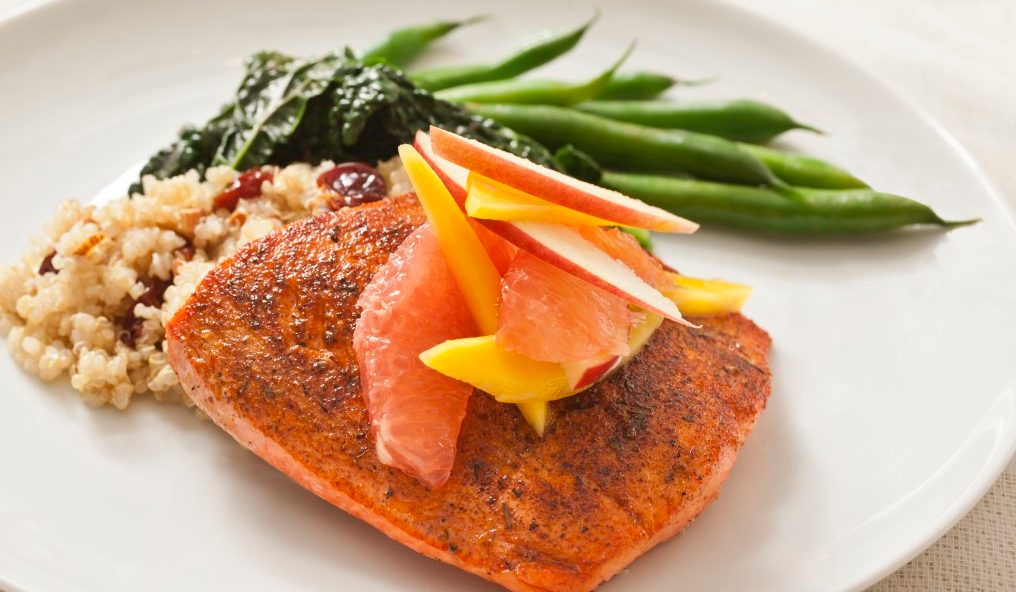The Anti-Inflammatory Diet, Anti-Inflammatory Foods List

The anti-inflammatory diet focuses on minimizing inflammation, which is the root of many chronic diseases. See our anti-inflammatory foods list here.
Inflammation is your body’s natural reaction to an intruder. You get a splinter in your finger, and the area around it gets inflamed because your body’s defenses rush to the site to isolate the invasion and promote healing. In that example, your immune system is working as it should.
But when your immune system is overactive, it can cause unproductive inflammation that, if left unchecked, can lead to disease. Chronic inflammation can play a role in Alzheimer's disease, cancers, type 2 diabetes, heart disease, arthritis, asthma, and many digestive problems.
YOU MIGHT ALSO LIKE: Is Inflammation the Root of All Disease?
Stress, smoking and exposure to other environmental toxins, not exercising, genetic predisposition, and dietary choices are all potential sources of chronic inflammation. The anti-inflammatory diet teaches you how to eat in a way that minimizes the inflammatory response, reducing your long-term risk for disease, especially if you’re over 60.
The diet was developed by Andrew Weil, MD, a Harvard-educated doctor and pioneer in the field of integrative medicine and founder of the University of Arizona Center for Integrative Medicine.
The diet is not specifically designed for weight loss, but many people following it naturally lose weight. The diet can increase your metabolism and stabilize your blood sugar, helping your body burn fat rather than store it, with:
- Low-glycemic-load meals (foods that don’t cause your blood sugar to spike)
- Lots of protein, healthy fats, and fiber-rich fresh fruits and vegetables
- Plenty of water
What’s involved?
There are no specific meal plans for this diet. Instead, it recommends foods that should make up the majority of what you eat — and foods you should avoid. Generally, your diet should include as much fresh (not processed) food as possible. You should minimize fast food and maximize fruits and vegetables.
Your distribution of calories should be:
- 40 to 50 percent from carbohydrates
- 30 percent from healthy fats
- 20 to 30 percent from protein
The diet uses an Anti-Inflammatory Food Pyramid to guide you more specifically about what and how much to eat.
Anti-inflammatory foods list
Fruits and vegetables. Fruits and vegetables are at the bottom of the pyramid, making up the bulk of the diet. It recommends four to five servings a day of vegetables and three to four servings a day of in-season fruit, both preferably organic. Those foods provide flavonoids and carotenoids, which have both antioxidant and anti-inflammatory properties.
Grains and beans. Whole grains (3 to 5 servings a day), beans and legumes (1 to 2 servings a day), and pasta (2 to 3 times a week) make up the next level of the pyramid. To help minimize blood-sugar spikes, the bulk of your carbs should be low-glycemic-load (LGL) carbohydrates. Grains should be intact or in a few large pieces. Do not eat whole wheat bread or other products made from flour. Beans and legumes are another LGL food and are rich in folic acid, magnesium, potassium, and fiber. Cook pasta al dente to maintain its LGL properties.
YOU MIGHT ALSO LIKE: Healthy Fats and How to Eat More of Them
Healthy fats. The recommended 5 to 7 servings per day of healthy fats can include extra virgin olive oil (EVOO), expeller-pressed organic canola oil, walnut, hazelnut, and other oils, nuts, avocados, and seeds. Your goal is to consume fats that are rich in either monounsaturated or omega-3 fats. You should do the bulk of your cooking with EVOO, which is rich in polyphenols with antioxidant activity. Avoid margarine, vegetable shortening, partially hydrogenated oils, and all products listing them as an ingredient.
Fish and seafood. Two to six servings per week of oily fish — wild Alaskan salmon, sardines, herring, and black cod — are recommended for their rich omega-3 fat content, which is strongly anti-inflammatory. You should take fish oil supplements containing both EPA and DHA if you choose not to eat fish.
Soy. You should consume one to two servings per day of whole soy foods, such as edamame, soymilk, and tofu for their isoflavones, which have antioxidant activity and are protective against cancer.
Mushrooms. Unlimited amounts of Asian mushrooms — shiitake, enokidake, maitake, oyster, and wild mushrooms (avoid button, crimini, or portobello) — are recommended for their compounds that enhance immune function. They should always be cooked.
Other protein. You can eat high-quality natural cheeses and yogurt, omega-3-enriched or organic eggs, skinless poultry, and lean meats 1 to 2 times per week. The diet generally recommends minimizing consumption of animal foods.
The top five tiers of the pyramid are:
- Healthy herbs and spices, such as garlic, ginger, and turmeric in unlimited quantities
- 2 to 4 cups per day of white, green, or oolong tea
- Daily supplements to fill in micronutrient gaps and ensure you’re getting adequate amounts of antioxidants
- No more than 1 to 2 glasses per day of red wine
- Sparse amounts of healthy sweets, such as plain dark chocolate
For meal planning ideas and other healthy-eating and -living advice, Weil’s website is a wealth of information. He has also published several books, including cookbooks that promote his anti-inflammatory principles.
If you’re concerned about inflammation and its potential health-related challenges, or if you’re just interested in eating healthier, the anti-inflammatory diet may be right for you.
YOU MIGHT ALSO LIKE: Glycemic Load — A Better Way to Monitor Blood Sugar?
Updated:
June 21, 2023
Reviewed By:
Janet O’Dell, RN